Is Manitou trying to reinvent the mountain bike again, more than 30 years later with this FS II Future MTB project?
Honestly no. Sure, Manitou was one of the pioneers of full-suspension mountain bikes back in the early 90s. But they are fully aware that suspension design has advanced far beyond simply strapping a second suspension fork to the back of any frame to get rear-wheel travel. Yet that doesn’t mean that it wouldn’t be fun to see what a more modern adaptation of their first full-suspension mountain bike would look like updated with some much more modern tech…
Manitou FS II project: Updating a Mountain Bike Legend
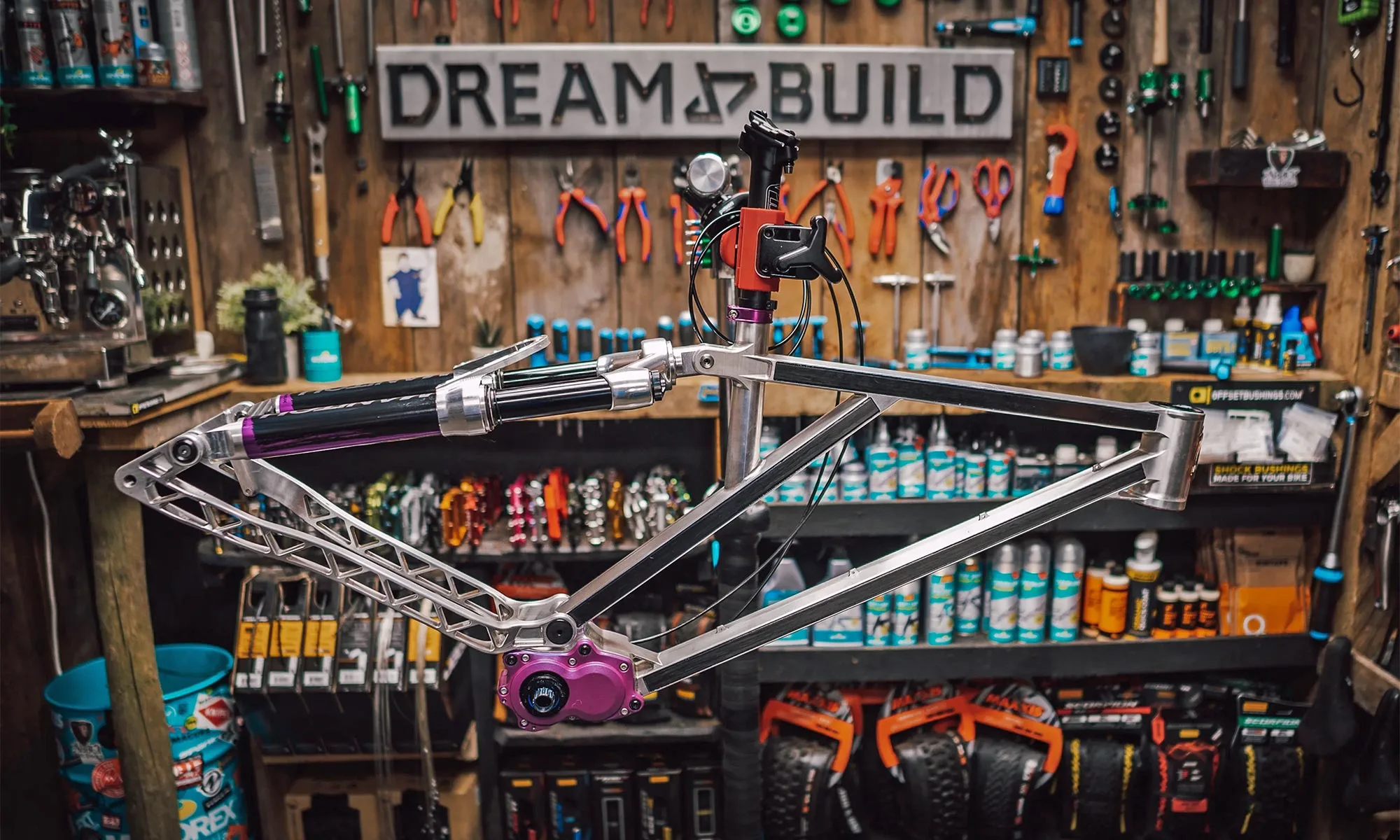
So, Manitou’s Hayes Bicycle Group parent company decided to reach out to Swiss gravity bike builders Gamux to see what kind of modern full-suspension trail bike they could create, built around a suspension fork managing rear wheel travel like in the early days of mountain bike evolution.
Manitou figured they could work with a short-travel XC kids’ bike fork in the back, a mid-travel trail bike fork up front, a Pinon gearbox transmission at the bottom bracket, and then let Gamux create one of their wild machined aluminum frames to make it all work, with bonded in carbon structures to modulate frame stiffness as needed!

The inspiration for all this silliness – and a brief history lesson for those too young to remember – was this early Manitou FS bike from the 1990s. Probably the first suspension mountain bike fork was created by Doug Bradbury under the Manitou name in 1990. Just a year later, Bradbury had strapped a second fork onto the back to create a softail mountain bike. All controlled by elastomers.
Back when 26″ and rim V-brakes were the only thing going, and 3x drivetrains were still the rage, Manitou was pretty advanced with their original FS offering already in 1993. It was a simpler time.
So, Manitou and Gamux set to work on making a new version of the FS.
And then once they had it, to take the new Manitou FS II project bike to the next level, they sought out Gee Milner for a Dream Build…
Manitou FS II future trail bike prototype Dream Build
“In an effort to celebrate not only the origins of the brand but also an innovation that changed the face of an entire sport, Manitou has partnered with Gamux, Pinion, Gates, Schwalbe, Hayes, ProTaper and Reynolds to create a forward thinking, modern twist on the original Manitou FS bike.
The thought was that while the nostalgic motives for recreating such a bike certainly hold some value, examining the past can also be a conduit to building a better future. Employing lessons learned from such a long and storied history with the same passion and desire to innovate ensures that the future of MTB is every bit as exciting as the wild ride that has brought us to present day.
The Manitou FS II project set out to incorporate the most advanced components and solutions of tomorrow on a platform that has roots in the iconic design that kicked off the revolution of the full suspension mountain bike.”
– Hayes Performance Systems
Why build it in the first place?
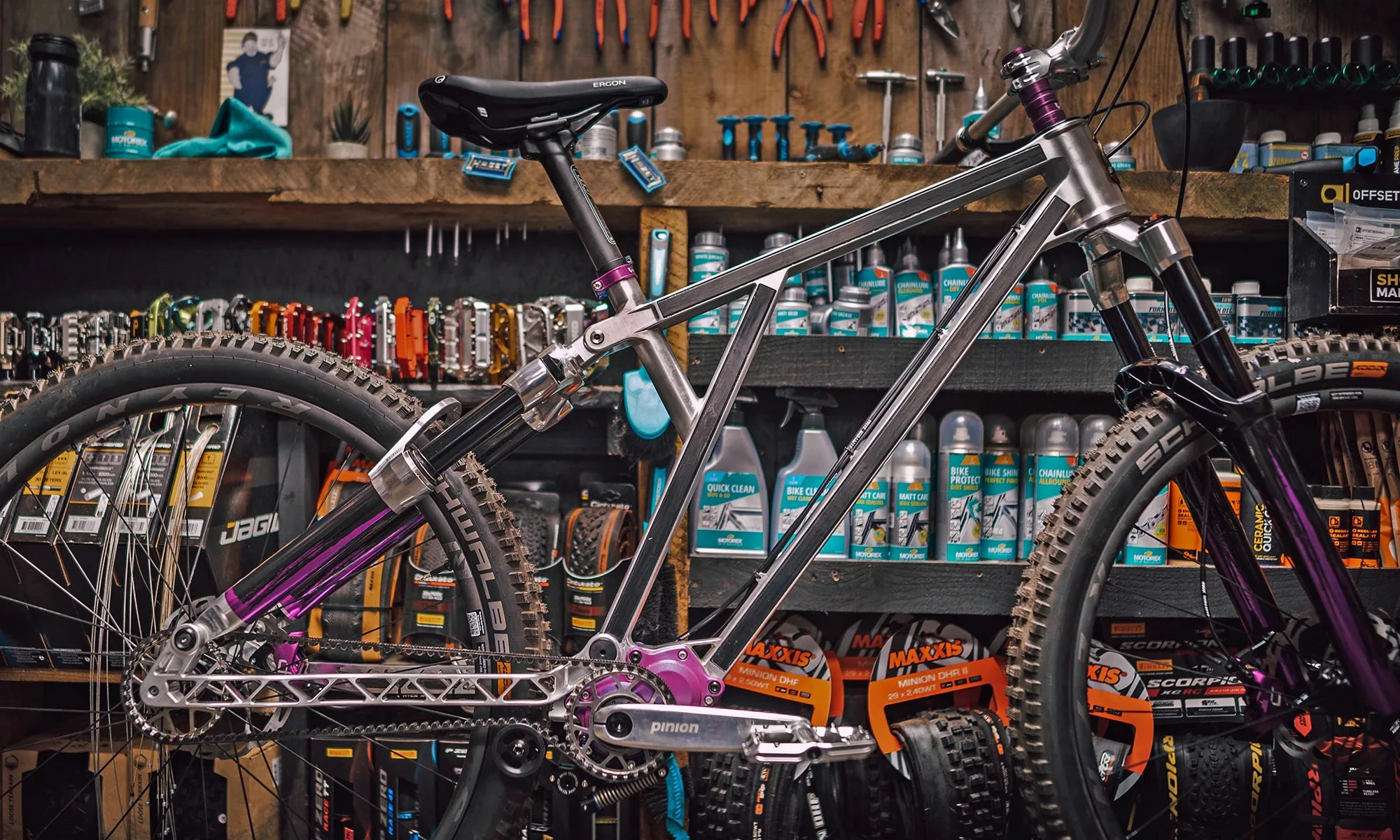
Now Manitou has assured us that their FS II project bike isn’t really meant to shake up full-suspension mountain bike design again. Modern suspension is much more nuanced than a single pivot with a semi-stock fork dropped in.
And in reality, with the bigger 29″ wheels we ride today, combined with the lower sloping toptubes to get enough standover height, I get the feeling that this isn’t exactly the smoothest way to actuate a couple of sliding fork stanchions without something else to provide stability & stiffness, side-to-side balance, or even to control kinematics in a more manageable way.
A fork at both ends
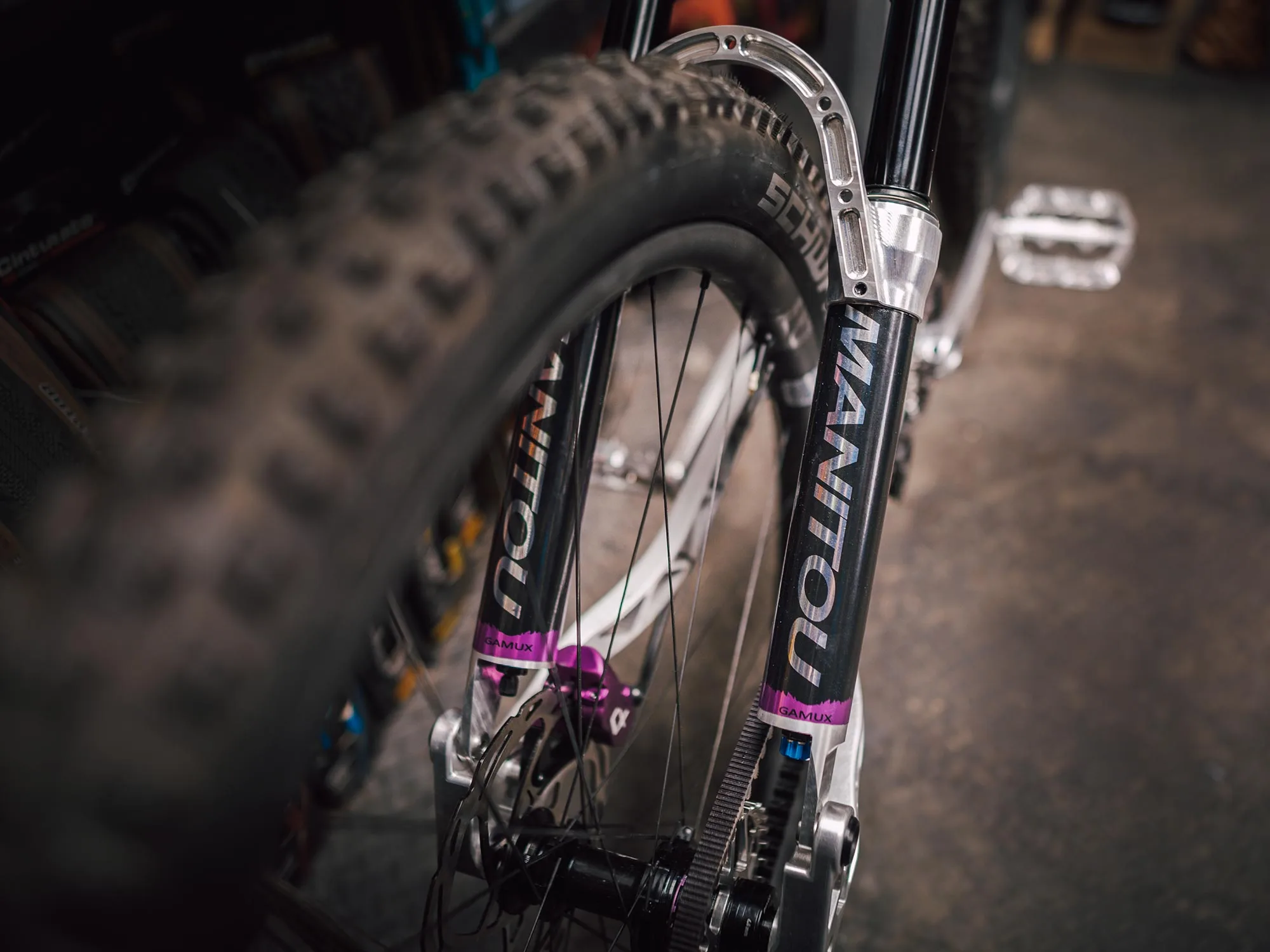
But I’m sure it was a fun project. And Manitou says the Gamux crew has actually ridden the FS II a bit, and says it rides well enough. So, at least it’s a bit more than a show bike.
The heart of the whole project is this Manitou Machete JUnit Pro fork. It apparently started out just like the same fork that’s on my kid’s 24″ hardtail. Except, Manitou & Gamux chopped the steerer tube off and CNC-machined a completely new set of lowers and a new yoke to interface with the frame. They also created an all-new slimmer arch shape, more reminiscent of that original FS from 1993.
And they gave it a custom tune and reduced the travel down to just 80mm to provide the completed bike with 125mm of single-pivot rear wheel travel – paired to 130/140mm up front.

And then, they gave the concept bike a Pinion gearbox and Gates belt drive to yield a lower center of gravity for “better handling, protected gearing, and significant reductions in unsprung weight.“
Geometry-wise, Gamux says they built it to the specs they would want for a shred-capable downcountry trail bike. So it gets a 66° headtube angle, a steep seat angle, relatively long 450mm chainstays to fit 29×2.4″ tires, and a 460mm long frame Reach.
Tech details by Gamux

Just like the rear fork was heavily modified by Gamux, they also machined the entire rest of the FS II prototype frame in their workshop in Switzerland.
While at first glance it looked like there were a few round tubes welded together with some more complex tube shapes, the whole frame is actually CNC-machined from 7075-T651 aluminum in just two parts.
The most dramatic-looking is the 1-piece chainstays swingarm with a hollowed-out truss design that’s not too dissimilar to Gamux’s current production belt-drive Sego gearbox DH race bike… or even their own still-in-development prototype trail bikes.
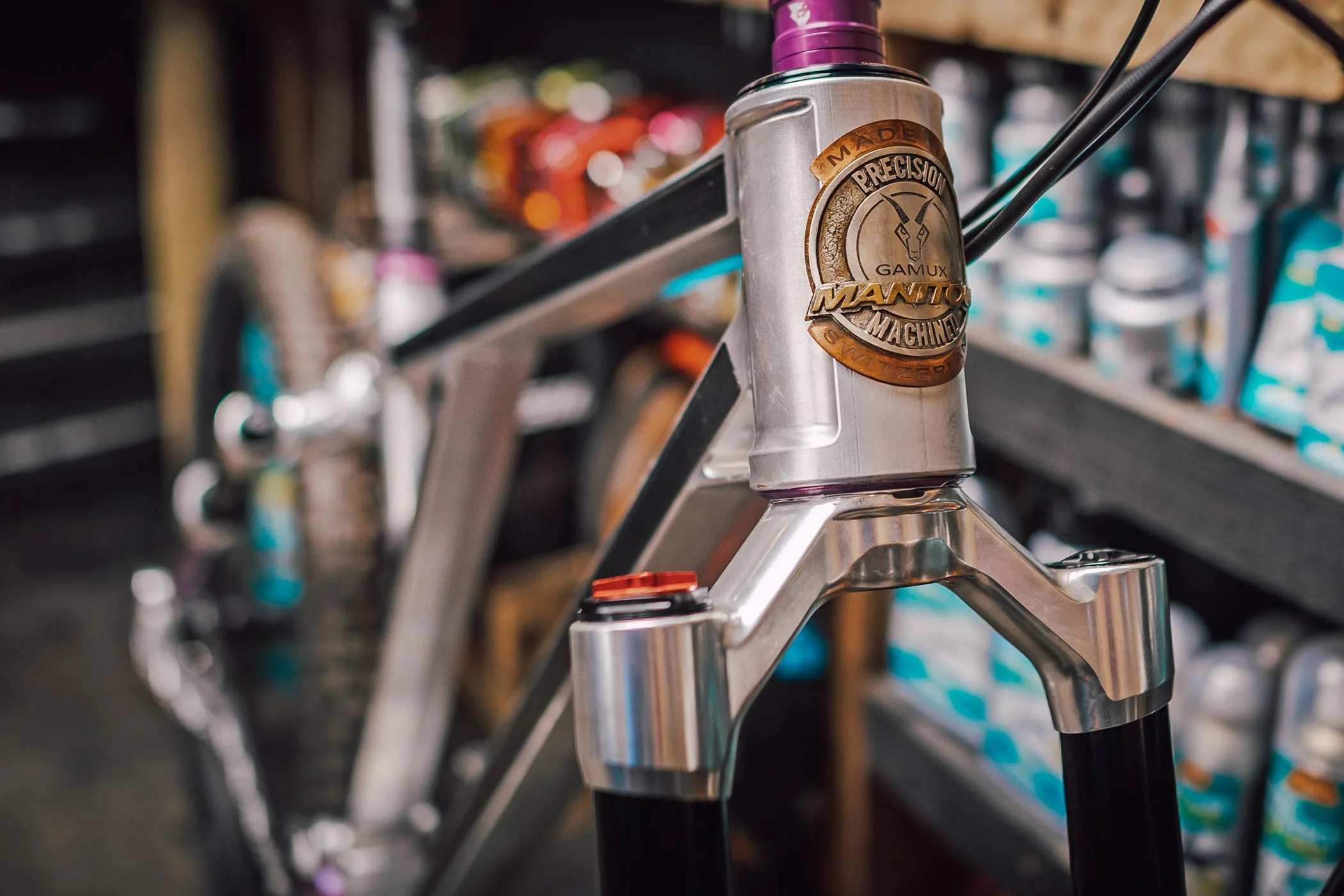
The main triangle is mostly made up of hollowed-out box section tubes – in-filled with bonded-in carbon tubes. Gamux explains that they developed these “Bonded Carbon Elements” with their World Cup DH race team in order to modulate frame stiffness and tune the flex of the frame individually for each rider.
The Manitou FS II project frame does get more conventional round tube shapes at the headtube and seattube – where the frame meets the tapered steerer tube of its fork and the seatpost.
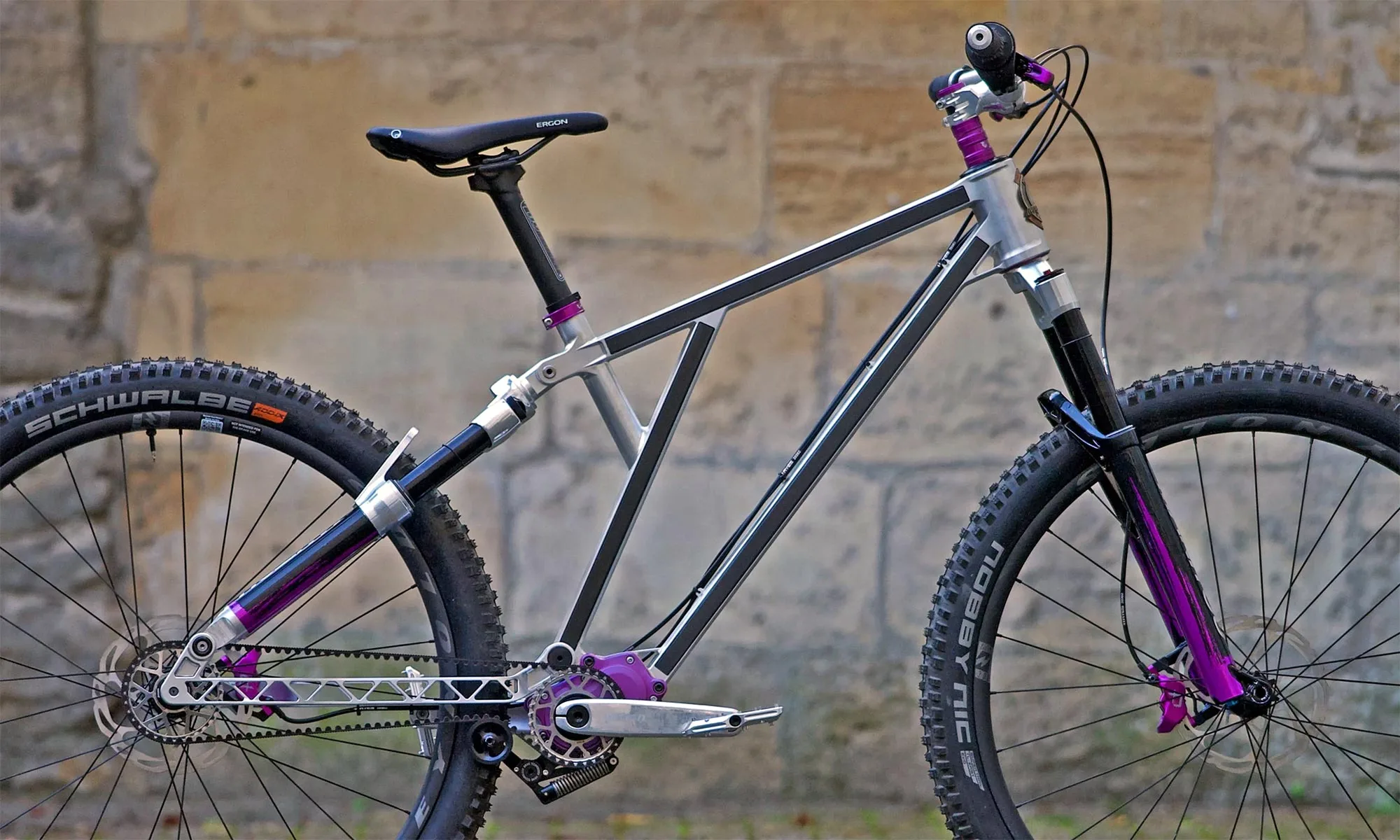
It looks like the oversized headtube can accommodate an angle adjust headset if they feel the need to tweak the bike’s handling. But there’s really not much room in that stubby seatpost to fit in a dropper post. Although, maybe you could get away with a short wireless dropper for more rideability?
The Manitou team described the construction of the bike as “somewhat cost prohibitive” if anyone thought they had intentions of making it a viable product you might actually be able to buy.
Giving the project bike a somewhat realistic build

While you aren’t going to find this Manitou FS II prototype showing up on the floor of your local bike shop anytime soon, there still are a number of more realistic components that make up the complete bike build. It is a Dream Build, so there’s a lot of fancy kit here. But it’s mostly reasonably attainable bits from the Hayes Bicycle family of brands.
Up front, the key spec is the Manitou Mattoc Pro fork. Truly one of the lightest, stiffest, and most versatile trail bike forks, the thousand-dollar 29er Mattoc features 34mm stanchions and can offer travel anywhere from 110-150mm, with easy adjustability in 1cm increments.
Manitou fitted their prototype FS II project bike with a Gates CDX belt-drive pulling a Pinion C1.12 gearbox – fittingly in anodized purple to match the special edition Purple Hayes (Haze) brakes.
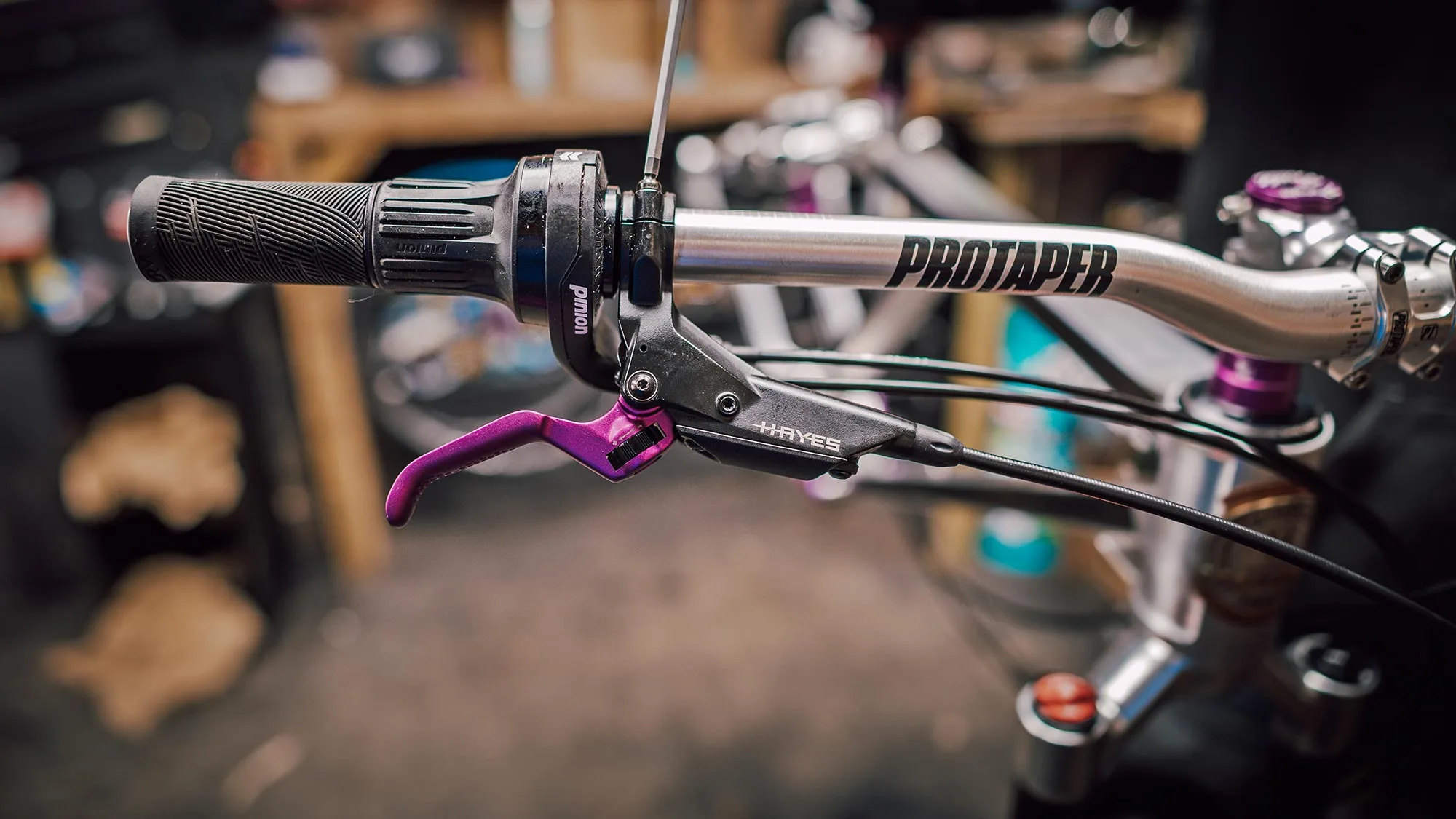
Besides Purple Hayes Dominion A4 brakes, there’s also a nice shiny full silver ProTaper A25 alloy bar and ATAC stem for more old-school style.

Of course, there are plenty more shiny purple graphics, and a set of carbon Reynolds Blacklable 309 Enduro wheels to finish off the dream build.
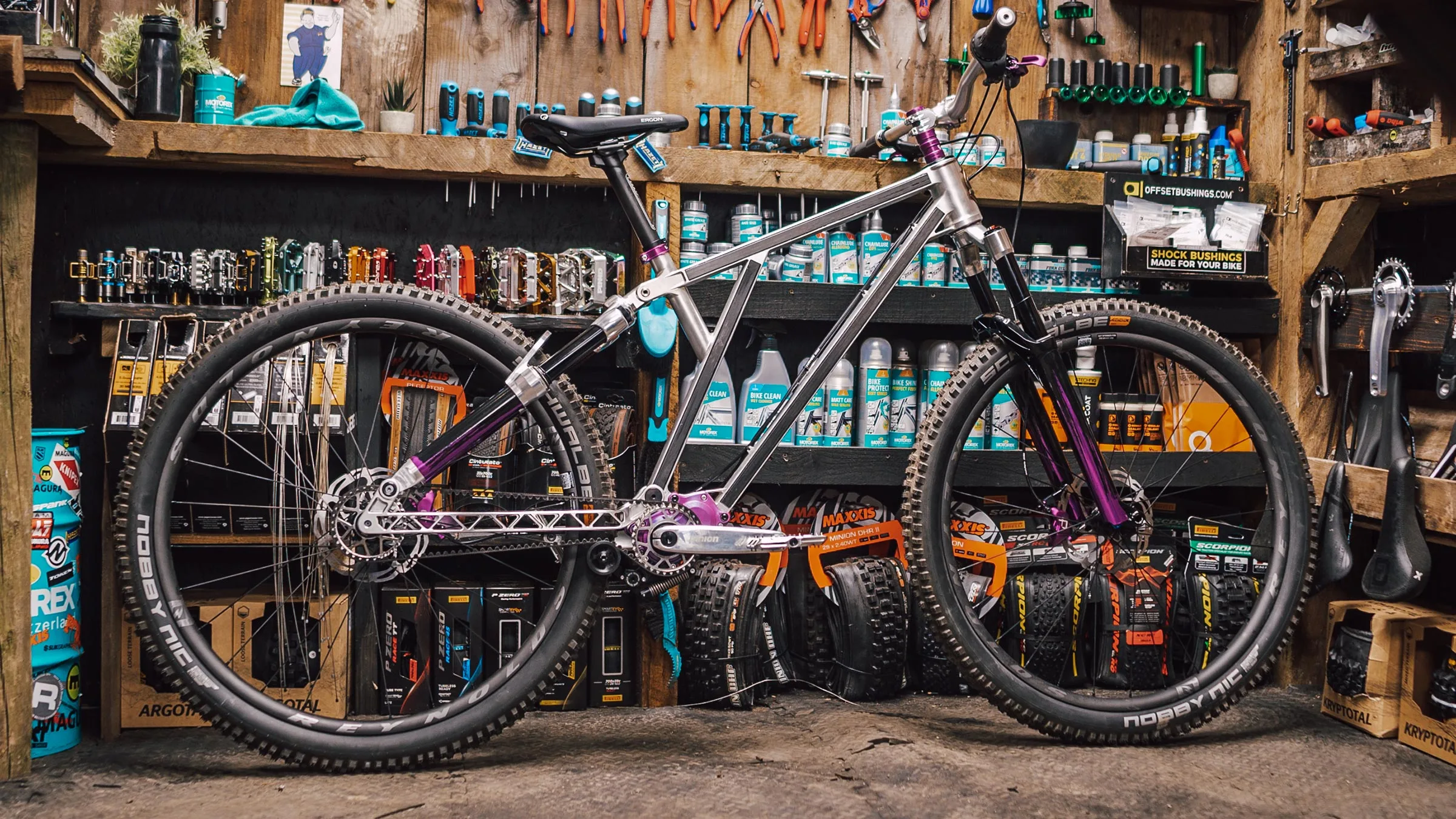
“As we reflect on the past, we not only see where we’ve come from but also catch a glimpse of the future of mountain biking. From the Manitou rear-facing arch to the standards Hayes set for brakes, and the near-universal adoption of full suspension, today’s riders—whether in XC, DH, or anything in between—are enjoying a better experience in the saddle, hands down. They ride on the technology of tomorrow, built upon lessons from the past for an incredible present.”
– Hayes Performance Systems
